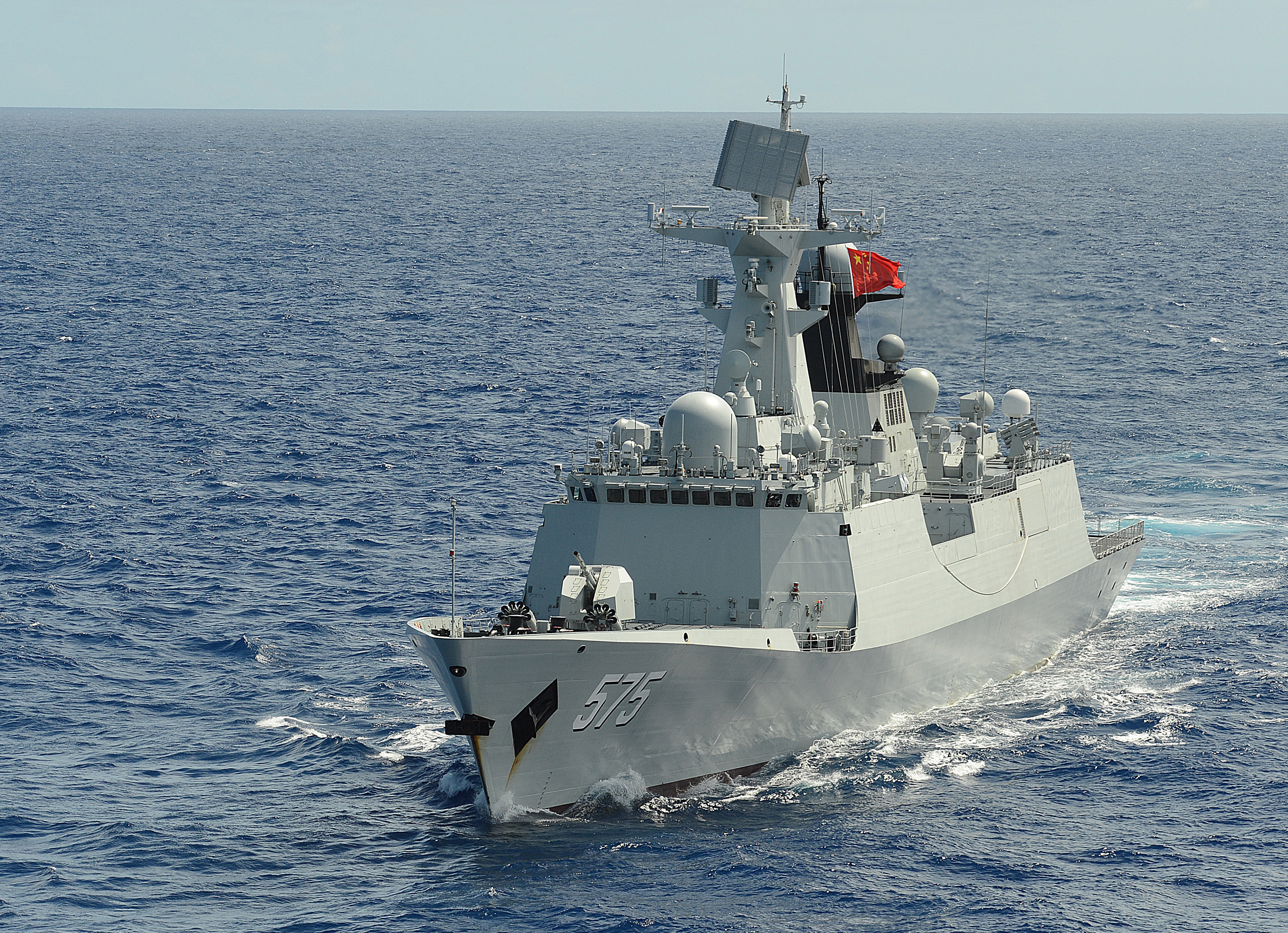
The United States has not revoked its invitation to China to participate in this year’s Rim of the Pacific (RIMPAC) exercise despite increasingly aggressive behavior towards its neighbors in the South China Sea because the U.S. hopes China may still participate in a “system of cooperative nations,” Defense Secretary Ash Carter said April 15 aboard the aircraft carrier USS John C. Stennis (CVN-74).
During a question and answer session with sailors, Carter was asked why China would still be allowed to join the multinational exercise despite “China’s misbehaving.”
“You’re right to use the word ‘allow,’ because actually we issued the invitations, and we have not taken the step of disinviting them,” Carter explained.
“And I’ll give you some of the logic behind that. Our approach to security in the region, as I indicated there, has always been to try to include everyone, so that’s our basic approach. So even as we stand strong and improve all of our systems and stand strong with our allies – and develop new partnerships with countries like India and Vietnam that we don’t have decades of experience with, like the Philippines; they’re all coming to us, in part because they’re concerned about China – but we’re still taking the approach of, everybody ought to work together here. So if the Chinese want to participate, I think it’s the right place for us to be. Come on, and instead of standing apart from everybody and isolating yourself and excluding yourself, try to be part of the system of cooperative nations that have made, as I said, the Asian miracle possible.”
The U.S. invited China to participate in RIMPAC for the first time in 2014 – and China, in addition to bringing its four invited warships and auxiliary ships, also staged a surveillance ship right at the edge of U.S. territorial waters to gather electronic and communications data from nearby ships and aircraft. Chinese officials said the ship’s presence near the exercise was within its rights to operate in the region.
The People’s Liberation Army Navy (PLAN) was invited during RIMPAC 2014 to participate in RIMPAC 2016, and that invitation has not been revoked despite ongoing aggression and militarization in the South China Sea, Carter said.

Since the last RIMPAC exercise, however, the South China Sea has seen some tense moments. There have been numerous allegations of PLAN ships harassing Vietnamese fishing ships in Vietnamese waters, an incident where a Chinese Coast Guard cutter rammed a Chinese fishing ship that was seized by Indonesian law enforcement inside Indonesian waters, and claims that Chinese fishing ships entered other nations’ territorial waters. China has also built up reefs so aircraft can land, ships can pull into port and radars and weapons could be deployed to these artificial islands.
China has acknowledged deploying military assets on the islands – such as anti-ship cruise missiles on Woody Island – though officials insist the weapons are for self-defense purposes only.
During his troop talk aboard Stennis, Carter said that “in the South China Sea China’s actions in particular are causing anxiety and raising regional tensions.” Still, China’s RIMPAC invitation stands, he said.
Also during the question and answer session, Carter was asked about China’s role in cyber attacks and how the U.S. government could better protect itself.
“China is one of actually many countries that we have found engaging in cyber misbehavior,” Carter said.
“We may have made some progress forward, because when the two presidents were together now six months ago or so, they reached an agreement to stop doing that, and we’re watching and seeing if that agreement is honored,” he said of a September 2015 meeting between Presidents Barack Obama and Xi Jinping.
“We’ve got to be good at defending our networks, but you can’t count on anybody not to try to exploit networks as a way of creating vulnerability for you,” he said of the more general global threat of cyber crime, adding that the Defense Department is investment money and people in protecting the networks that warfighters use to do their jobs.
“Some of this is just from pranks. Some of it is from companies trying to steal their secrets, and some of it is by people who want to do damage, including governments that want to have the ability to do damage,” Carter said.
“So wherever it comes from, we’ve got to be able to defend ourselves in the first instance, and then people ought to know that if you attack us – I don’t care how you attack us; cyber or whatever, an attack is an attack –we’re going to respond. Not necessarily in cyber, but we’ll respond in the way we choose. But you’ll be sorry you did it.”





